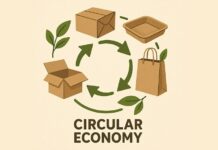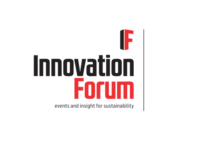The pharmaceutical sector is poised for notable expansion thanks to innovations in gene therapy and GLP-1 medications, but it confronts several formidable challenges, including the expiration of patents, unpredictable funding, and pricing constraints.
In the midst of these issues, sustainability has become crucial in the drug manufacturing process. Emphasizing sustainability is not just about environmental concerns; it’s a strategic necessity that can boost revenue, reduce expenses, and spark innovation.
The pharmaceutical industry faces the dual responsibility of protecting human health and the environment. It’s well-known that the sector heavily contributes to climate change, with emissions surpassing those from the automotive industry.
Although recent difficulties have hindered progress, firms focusing on green practices are expected to gain a long-term competitive edge. This highlights the necessity for broad sustainability efforts in the sector. Leaders must prioritize sustainability to boost operational efficiency, cut costs, and secure a competitive position.
The Green Engine When It Comes To Growth
Green chemistry, which emphasizes eco-friendly practices, focuses on using renewable resources, minimizing waste, and avoiding hazardous materials. These principles apply to synthesizing active pharmaceutical ingredients (APIs), as well as drug formulation, production, and packaging.
Eco-friendly practices often result in increased efficiency, energy and water savings, reduced waste disposal expenses, and avoidance of regulatory penalties. The pharmaceutical sector has advanced in using more sustainable packaging. For instance, Novo Nordisk switched from plastic to paper trays for its insulin pens, reducing packaging weight by 80% and volume by 50%. These adjustments decrease the overall cost of goods and lower transportation costs. Moreover, Novo Nordisk’s leadership in environmental sustainability has received customer acclaim, boosting loyalty and public image.
An important industry trend is the move to fusion-based amorphous dispersion techniques over traditional spray drying dispersion (SDD) methods. This novel approach for producing amorphous solid dispersions (ASDs) eliminates harmful solvents and reduces waste, in line with green chemistry principles.
ASDs are vital for enhancing the bioavailability of drugs with poor solubility. Traditional techniques, such as SDDs, depend on organic solvents that greatly affect the environment. It’s estimated that commercial spray-dried products consume around 8,000 metric tons of solvent yearly. The use of hazardous solvents like dichloromethane (DCM) and tetrahydrofuran (THF) worsens environmental damage, leading to air and water pollution and health risks for workers and nearby populations.
These detrimental effects underscore the need for more sustainable, innovative solutions. Fusion-based technologies reduce environmental impact and improve drug bioavailability by eliminating solvent use. This method tackles environmental issues, streamlines manufacturing, reduces costs, and speeds up development timelines.
High-energy fusion techniques offer high-throughput processing in a compact space, creating stable amorphous dispersions. These approaches produce less waste and use fewer production resources compared to traditional solvent-based methods. Furthermore, the lack of solvents simplifies regulatory adherence and lessens the need for comprehensive environmental, health, and safety management systems.
Embracing advanced fusion-based technologies goes on to allow the manufacturers to create superior ASDs that have in them better sustainability and scalability. These developments align with the industry’s broader objectives of minimizing carbon footprints and fostering environmental responsibility, while maintaining formulation performance and health benefits.
Besides environmental advantages, optimizing manufacturing via these methods results in considerable cost savings. Simplifying processes and removing redundant steps enhance efficiency. In essence, this green revolution anticipates a future where pharmaceutical manufacturing produces lifesaving drugs and preserves the planet for future generations.
Rising Investment in Sustainable Technologies
Despite pandemic-induced funding challenges, investment in sustainable technologies is rebounding. The pharmaceutical industry is witnessing a steady rise in funding for technology-driven sustainability initiatives. Investors recognize that these innovations offer better risk-adjusted returns and align with broader sustainability objectives. This trend implies a growing recognition of the long-term benefits of sustainable practices in drug manufacturing.
A Deloitte Center for Health Solutions survey underscores the rising emphasis on sustainability in the biopharmaceutical sector. The 2023 survey pertaining to 105 global biopharma supply chain executives went on to show a strong dedication to lowering environmental impact:
- More than half are working on reducing water use (64%), sourcing sustainable materials (59%), and creating eco-friendly supply chains (57%).
- Almost half (47%) are developing ‘smart factories’ to enhance energy use, manufacturing efficiency, and waste reduction.
Technology is key to boosting sustainability efforts. The survey revealed that 24% of executives anticipate their companies offering stakeholders real-time updates on their sustainability progress within the next two years. This transparency will likely enhance communication and accountability regarding these initiatives.
Creating Greener and Resilient Supply Chains
The pharma industry depends greatly on its supply chain, which can also have a substantial environmental impact. Creating a greener supply chain is advantageous for the planet and provides strategic benefits to pharmaceutical firms. Cutting waste, energy consumption, and greenhouse gas emissions across the supply chain is essential for genuine environmental stewardship. A sustainable supply chain is more resilient to interruptions, guaranteeing patients continuous access to essential medications.
By centering their strategies around sustainability, progressive companies are creating strong, eco-friendly supply chains aimed at promoting a healthier future through innovative solutions. Here are a few methods pharma companies employ to implement sustainable changes:
Building Trust Through Supply Chain Transparency
Pharma firms are improving their supply chains through open communication with suppliers and stakeholders. This transparency offers complete visibility, enhancing decision-making and resilience to disruptions. Collaborating with vendors dedicated to sustainability ensures that every part of the supply chain aligns with environmental objectives, focusing on renewable energy, waste reduction, and recycling initiatives. For instance, blockchain technology is being used more to create unchangeable records of transactions and processes, improving traceability and accountability. This openness builds trust with consumers and partners and allows companies to swiftly address any sustainability concerns within their supply chains.
Leveraging Technology for Sustainable Supply Chains
Enhanced visibility in the supply chain enables companies to address regulatory changes and unexpected challenges proactively. This agility allows for swift adaptation to new environmental regulations and market demands. Advanced real-time monitoring and data analysis technologies further enhance transparency and efficiency, ensuring meaningful sustainability efforts.
For example, IoT devices can monitor environmental conditions in real-time, optimizing energy usage and minimizing waste. Advanced analytics can foresee potential supply chain disruptions, allowing companies to take preventive measures. These tech tools are vital in reducing carbon footprints and ensuring compliance with evolving environmental standards.
Aligning Sustainability with Business Goals
Enhancing patient health is key to the sustainability movement. Stakeholders appreciate a firm commitment to sustainable practices, shown through comprehensive process reviews. Adopting sustainability is both socially responsible and strategically advantageous, strengthening long-term relationships with patients, suppliers, and the wider community. More companies are integrating ESG (Environmental, Social, and Governance) criteria into their business strategies, ensuring that sustainability objectives align with overall business goals. This alignment promotes a culture of responsibility and innovation, driving continuous improvements in environmental impact and patient care.
Financial Gains from Green Practices
Investing in sustainability results in substantial financial benefits through increased revenue and cost savings. Pharma firms can optimize operations by embracing green chemistry principles, overhauling manufacturing processes, and creating secure, transparent supply chains. Green chemistry focuses on designing chemical products and processes that minimize or eliminate hazardous substances, resulting in safer products and less environmental pollution.
Moreover, energy-efficient manufacturing methods and sustainable raw material sourcing can lower operational expenses. This alignment of investor, patient, and innovation efforts promotes continuous improvements in treatments and patient outcomes. Leading companies in sustainability are also more likely to attract investment and talent, boosting their competitive edge and market position.
The Strategic Imperative of Sustainability in Pharma
Emphasizing sustainability within the pharmaceutical industry is crucial for long-term success. By integrating sustainable practices across their operations, companies can address current environmental and social challenges, harness technological advancements, and build a more resilient future for themselves and their communities.
This path demands a thorough review of processes to ensure patient health outcomes remain a top priority. A strong commitment to sustainability extends beyond internal actions. It involves building long-term relationships with all stakeholders—patients, suppliers, and others—by showcasing a dedication to social responsibility and strategic advantage. In essence, sustainability is not just ethically sound; it’s a smart business choice that fortifies the industry’s foundation for a prosperous future.



























